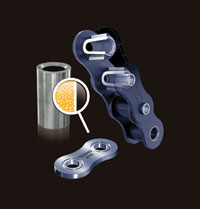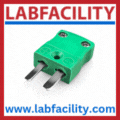
Posted to News on 25th Jan 2019, 00:00
Lube-free chain for food production
Food grade lubricants are highly expensive and often wasteful, so here Derek Mack of Tsubaki UK discusses a possible alternative.

Legislation surrounding the manufacture or processing of foodstuffs is rightfully strict. Manufacturers should have processes in place to prevent the incorporation of visible foreign bodies, and there is also the issue of trace materials that are harder to detect and address. One such potential trace material is the oil or grease used to lubricate the production machinery. It is sometimes inevitable that some lubricant will find its way into the food products. So food processing machinery must use lubricants that are not harmful when consumed by humans.
There are laws and industry standards that manage use of food grade lubricants, and there are three main categories: H1 lubricants may have incidental contact with the food being produced, so must not be harmful; H2 lubricants must not contact the food, so can only be used in closed systems; H3 soluble oils can be used to clean or protect equipment that contacts food, but must be washed off before the equipment is used.
Buying-in and managing the use of food grade lubricants is expense and requires responsible oversight. Thus managers in the food processing industry may be able to gain a competitive edge if they can drive efficiencies into these tasks, whilst maintaining suitable high standards. One proven way to do this is with the use of drive or conveyor chain that is supplied with a food grade self-lubrication feature. Such a chain is designed to be permanently lubricated so that it does not need to be relubricated during its working life.
While this may seem intuitively to be a very minor gain, calculations about the time and manpower required to carry out such relubrication to a regular schedule, plus the cost of the special lubricant, show that in fact there is a notable saving to be made. Furthermore, this saving can often be multiplied many-fold when you add in the cost of lost production time, and potential to the life of chain product by having continuous lubrication applied from within. However, even this figure could pale into insignificance if you consider the cost and reputational damage that could be caused by a major product recall.
Tsubaki first introduced lubricated-for-life chain (often referred to as lube-free chain) thirty years ago. The core concept of the Lambda design is the use of an oil impregnated sintered bush. This is self-lubricating for the life of the chain and, importantly, retains the vast majority of the lubricant within the chain rather than it leaking out to potentially contaminate products.
Now in its sixth generation of design, all Lambda chain is lubricated with NSF-H1 food grade lubricant impregnated into the bushes as standard, with H3 oil impregnation being available on request. Significantly, Lambda is designed to be able to withstand moderate washdown routines used in the food industry.





